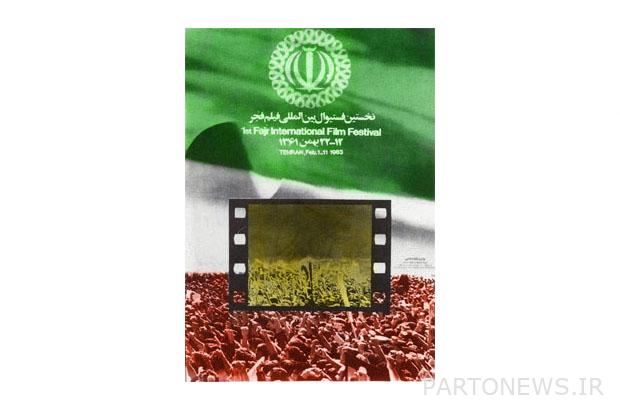The first and second Fajr Film Festivals/Kiarostami’s success with the short film and the emergence of Parastoi

In the first Fajr Film Festival, which was held in February of 1361, only amateur (non-professional) films competed with each other, and professional cinematographers only attended. The important point of holding the first festival is that even the war imposed by Iraq against Iran did not prevent it from being held.
Charso Press: From the very first days of the victory of the revolution, it was clear that cinema would be an important and important topic in the cultural future of Iran. Just in the days when many extremists were trying to prevent the growth and further development of cinema in Iran under the pretext of fighting corruption and prostitution, Imam Khomeini (RA) said that “we are not against cinema”, paving the way for It made the forward movement of cinema smoother in Iran.
Perhaps the first clear sign of this movement can be seen in the holding of the first Fajr Film Festival only four years after the victory of the revolution. Although there was a 10-year history of holding the Tehran Film Festival before the revolution, there is no doubt that the period of cultural transition from the Pahlavi regime to the Islamic Republic caused extensive changes in the country, and for this reason, the first film festival was held shortly after the victory of the revolution. Islamic was good news for cinematographers and fans of the seventh art.
Farabi Cinema Foundation has been responsible for organizing and managing the Fajr Film Festival since the very first period, and Hossein Vakhshuri was the secretary of the first period of the festival. The important point of holding the first Fajr Film Festival is that even the war imposed by Iraq against Iran did not prevent it from being held.
In the first festival, which was held in February of 1361, only amateur films competed with each other, and professional cinematographers only attended. Films such as “Red Line” by Masoud Kimiaei, “Haji Washington” by Ali Hatami, “The Death of Yazdgerd” by Bahram Bayzaei and “The Ambassador” by Fariborz Saleh were among the most important films of this period of the festival.
The movie “Ambassador” by Fariborz Saleh is one of those movies that shows the high quality level of Iranian cinema in the early 60s. If we want to make a comparison between the film “The Ambassador” and similar films in the religious genre of recent years, considering the amount of facilities, capital and technical power of Iranian cinema in 2016, we will undoubtedly admit that “The Ambassador” if It is not better than popular movies and series these days, it is not less than them.
However, the second edition of Fajr Film Festival was held in February 2016, while the films in both professional and amateur sections competed together, and for the first time, the winners received the Golden Plaque award. The most well-known filmmaker of this period is Alireza Davodenjad, who appeared with two films “Jayzeh” and “Spider’s House”.
The second festival allowed Iranian cinema to get acquainted with filmmakers, each of whom became important people in Iranian cinema in the following years; Mohsen Makhmalbaf, Rasool Sadr Aamili, Mohammad Ali Sajjadi and Khosro Sinaii are among these names. The interesting point of this period is the presence of Mohsen Makhmalbaf with three different films; The films “Estaizah”, “Tobe Nesuh” and “Two Eyed Eyes”.
Rasool Malaqlipour with the movie “Ninewa”, Mohammad Ali Sajjadi with the movie “Interrogation”, Mohammad Reza Aalami with the movie “The weak point”, Rasool Sadr Aamili with the movie “Deliverance” and of course Dariush Arjamand with the movie “Come under my rule” are present in this period. they had. In the movie Dariush Arjamand, Othman Mohammadparast, the deceased musician and a well-known name of Iran’s two strings, played a role.
The jury of the 2nd Fajr Film Festival did not consider an award for the best film, but awarded the golden plaque for the best director to Khosrow Sinaii for the film “The Monster Within”. The Golden Award for the best supporting actor went to Parviz Perstavi for his role in the movie “Land of Lovers”, which promised the emergence of a capable actor, and the Golden Award for the best actor went to Hossein Parsov in the movie “Weakness Point”, which unlike Parastavi In the following years, his name was rarely heard.
Labels of the second festival
The second festival has recorded other special labels in its history. Among other things, the golden medal awarded the best short film to Abbas Kiarostami’s “Hamsarayan”, Akbar Alami was seen as an academic figure in the jury, and the jury of the festival awarded the film “Weakness Point” by Mohammad Reza as it should be. And maybe he did not notice that later this film was introduced by critics as one of the best films after the revolution.

